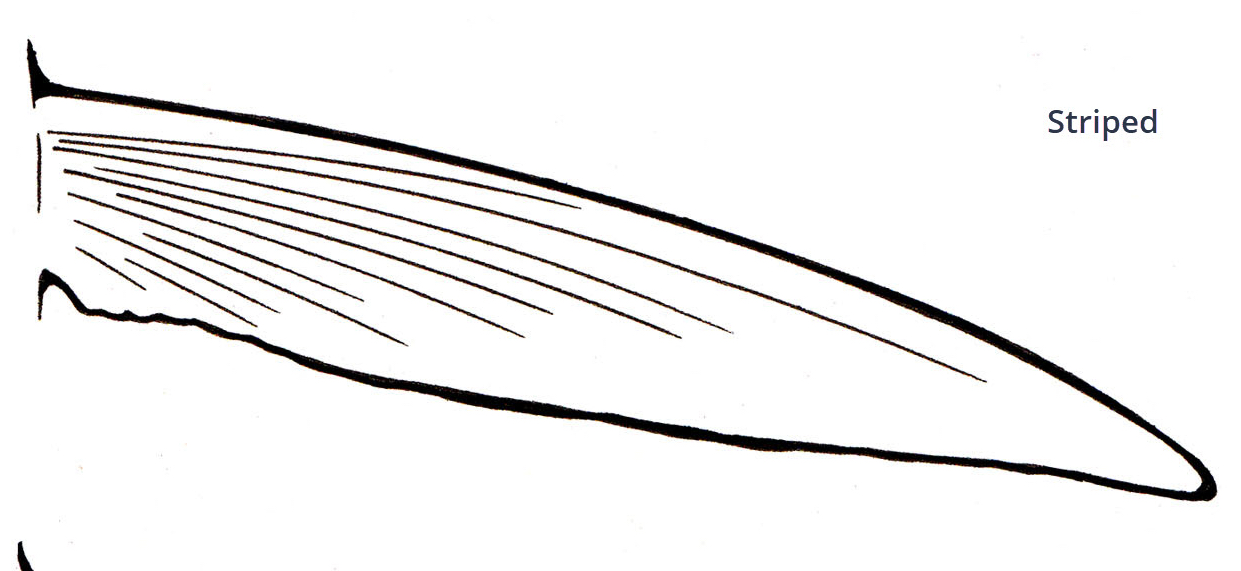Idenification Guide 
What Marlin is that?

Features distinguishing the three marlin species. Note that no single feature should be used in isolation, but rather, as many features as possible should be checked to confirm an identification (Table prespared by Dr Julian Prepperell; Illustrations courtesy Craig Smith Marine Art).
| Feature | Black Marlin | Blue Marlin | Striped Marlin | |
|---|---|---|---|---|
| A | Pectoral Fins | Rigid. Cannot be folded along body (for fish over about 20kg). Curved like half sickle, aerofoil cross section  |
Can be folded along body. strap-like, flat cross section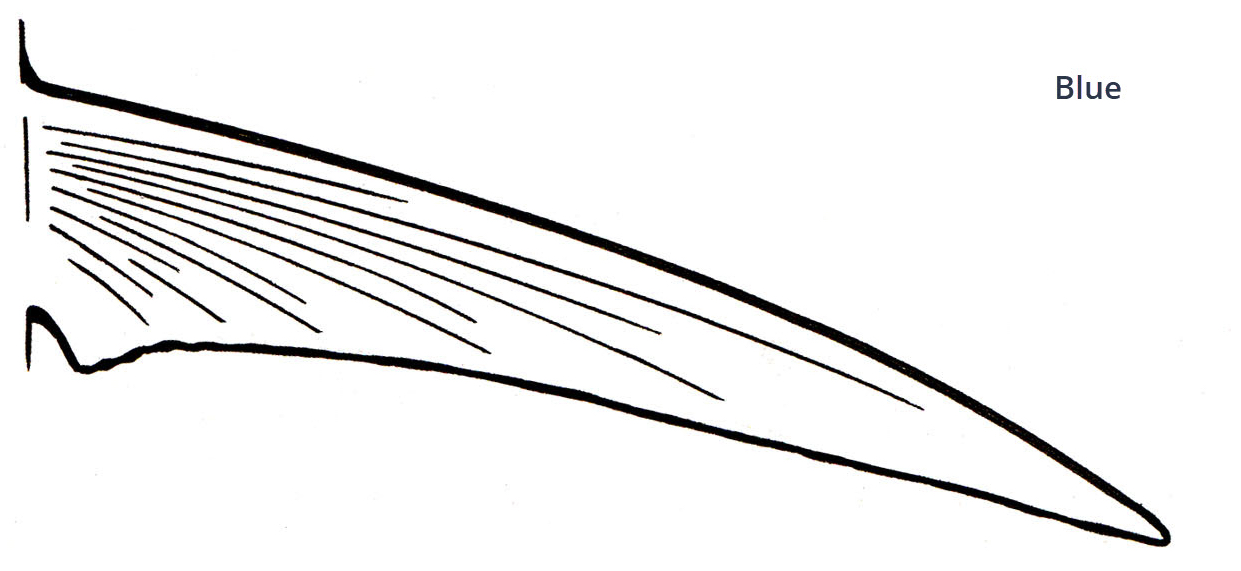 |
Can be folded along body. Strap-like, often 'leaf' shaped. Flat cross section
|
| B | First (Main) Dorsal Fin (when fully erect) | Lowest of all marlin; usually rounded tip. Height about half body depth. Rarely has spots. Stout (fin rays are relatively thick). In fish less than 50 kg, dorsal relatively high for much of its length | Intermediate (but obviously high). Height about two thirds body depth (about to level of origin of pectoral fin). Pointed tip. Sometimes has numerous small spots. Stout (fin rays are relatively thick) |
Highest of the marlins. Height equal to, or just less than, body depth. Trailing edge more gradual than other two marlin, often resulting in rounded tip and 'ragged' trailing edge. Relatively floppy (fin rays not stout) |
| C | Second Dorsal & Second Anal Fins | Second dorsal fin anterior to (in front of) second anal fin (measure as shown in accompany-ing figure) | Second dorsal fin posterior to (behind) second anal fin | Second dorsal fin posterior to (behind) second anal fin |
| D | Pelvic, or Ventral Fins | Very short. Less than 15% of lower jaw-fork length. | Moderately long; 16 to 23% of lower jaw-fork length. | Long. 15 to 27% lower of jaw-fork length. |
| E | Lateral Line | Single. Obvious only in small (less than about 25kg) specimens | Complex, but not visible. (If skin is cleaned and dried, lateral line shows as 'chicken-wire' shapes on back of skin) | Complex, but not visible. (If skin is cleaned and dried, lateral line shows as 'chicken-wire' shapes on back of skin) |
| F | Scales | Scales relatively deep, but can be clearly discerned. | Very obvious just under skin. Scales are nearly always exposed by skin breaking when handling | Scales not obvious (deep in skin). Not easily exposed by superficial abrasion of skin |
| G | Lower Jaw | Short & 'stocky' (Like chicken's beak). Often turned down at tip | Short & 'stocky'.(Like chicken's beak). Some-times with downward turn at tip | Long and slender. Acutely pointed |
| H | Length Ratios | Ratio of eye-fork:lower jaw-fork lengths ranges between 0.85 and 0.88. Similar to blue marlin | Ratio of eye-fork:lower jaw-fork lengths ranges between 0.87 and 0.89. Does not overlap with striped marlin | Ratio of eye-fork:lower jaw-fork lengths ranges between 0.82 and 0.86. Does not overlap with blue marlin |
| I | Bill | Stoutest of three marlins. Large sharp denticles over surface - can cause abrasive injuries when handling | More slender than black, stouter than striped. Large sharp denticles over surface - can cause abrasive injuries when handling | Slenderest of the three marlins. Very small denticles over surface - unlikely to abrade skin when handling |
| J | Body Shape | Oval in cross section. Robust at level of pectoral fin, tapering gradually towards tail | Oval in cross section. Heavier than striped marlin for any given body length (see graph) | Slab sided. Elliptical in cross section. Weight per body length least of the three marlins (see graph) |
| K | Maximum Size | Northern Qld: 650 kg; NSW: 350kg. Usual 'run' off southern Qld/NSW is 30 kg to 120kg. Specimens less than 20 kg not uncommon | Eastern Australia: 370kg. Usual 'run' is 100 kg to 200kg. Specimens under 50kg very rare off east coast | Eastern Australia: 190kg. Rare at this size. Usual 'run' off eastern Australia is 60 kg to 120kg. Uncommon under 40kg |
| L | Flesh Colour | Pinkish white/grey | Pinkish white/grey | Mostly a distinct orange colour (resembling smoked salmon) |
| M | Colour/Vertical bars | May show bars when alive (esp. juveniles), but disappear after death. Dorsal fin usurally a distinctive mauve/pink in life. Body colour tends to a dull grey after death | Show vertical bars in life and after death. Body colour becomes steely grey to very dark blue after death. Dark colour over whole body, including head. Light blue eye colour stands out | Vertical bars in life, and always visible after death. Whole body does not become dark after death. Belly usually retains creamy-white colour. |
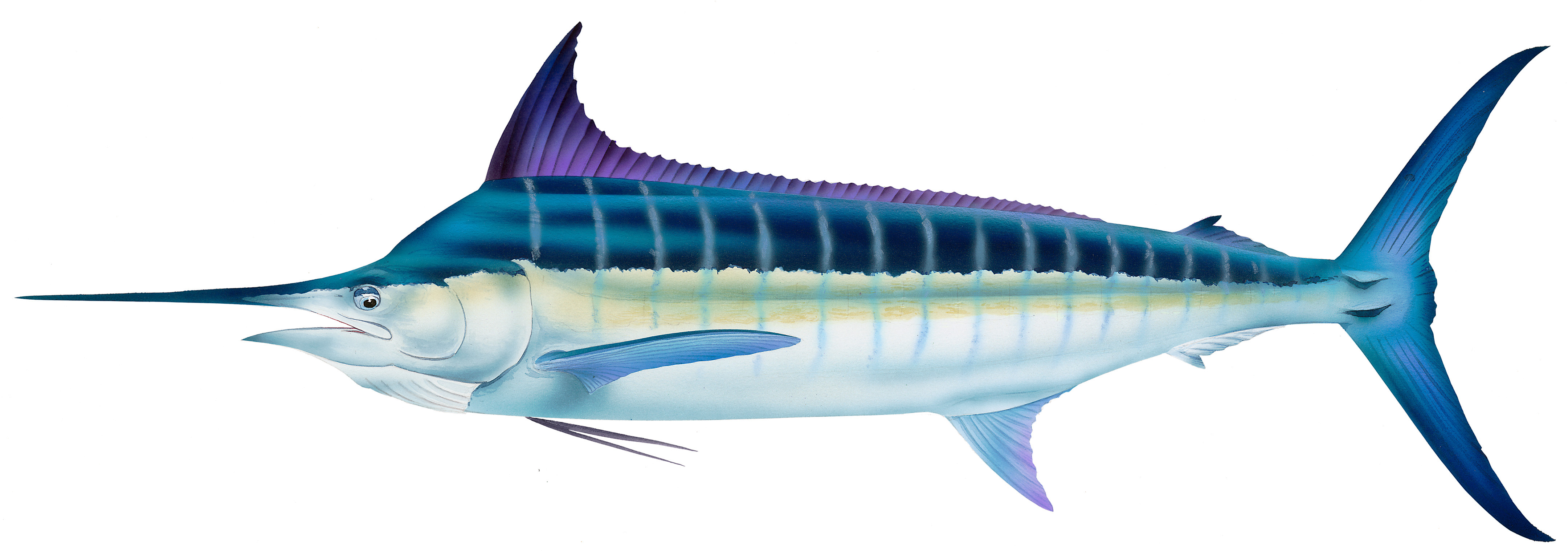
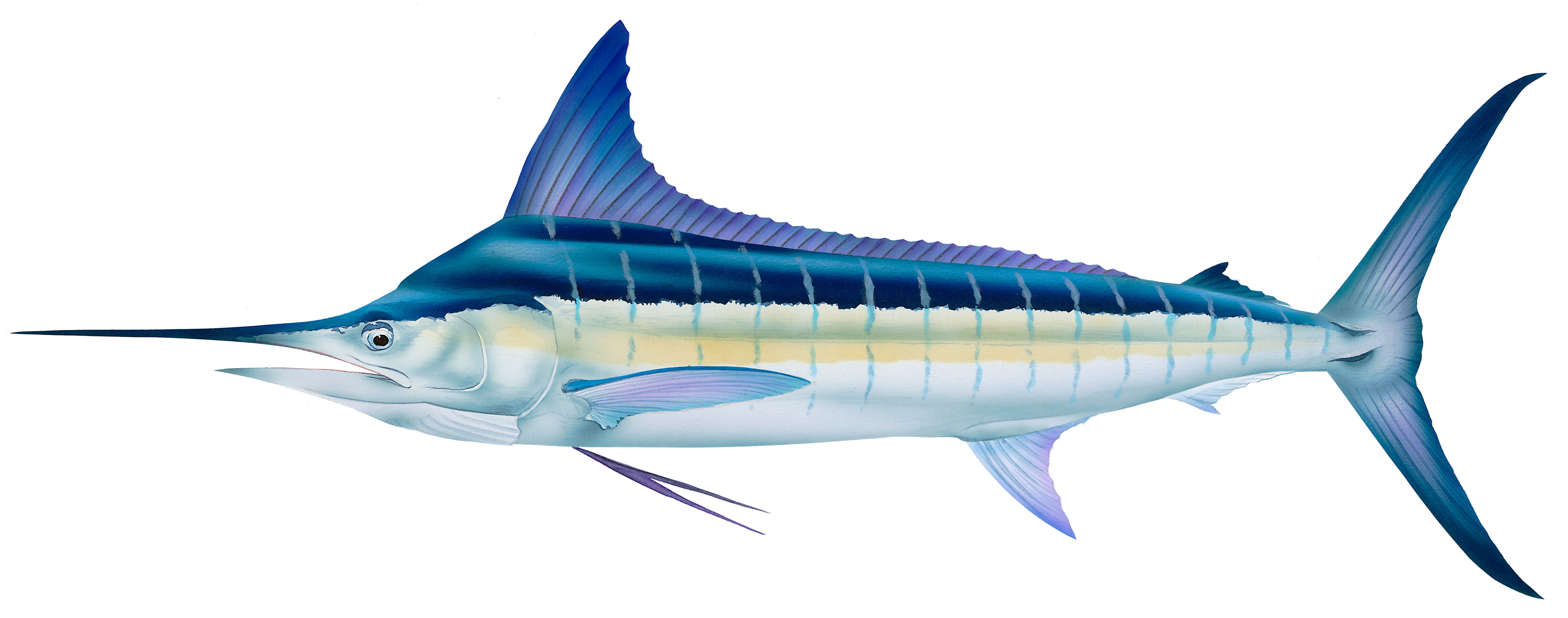
And how big is it?
Estimating the size and weight of your catch is one of the more refined skills of a gamefish angler, It's especially important when practising tag-and-release as many of the important statistics following from tagging programs are influenced by your size and weight estimates
Graphs to help you more accurately determine weights of black, blue and striped marlin, sailfish, yellowfin and southern bluefin tuna and mako and tiger sharks. All graphs prepared by Dr Julian Pepperell derived from this own data collection over many years from inspection and measurements of large numbers of infigiduals of each species, Illustrations Craig Smith Marine Art.


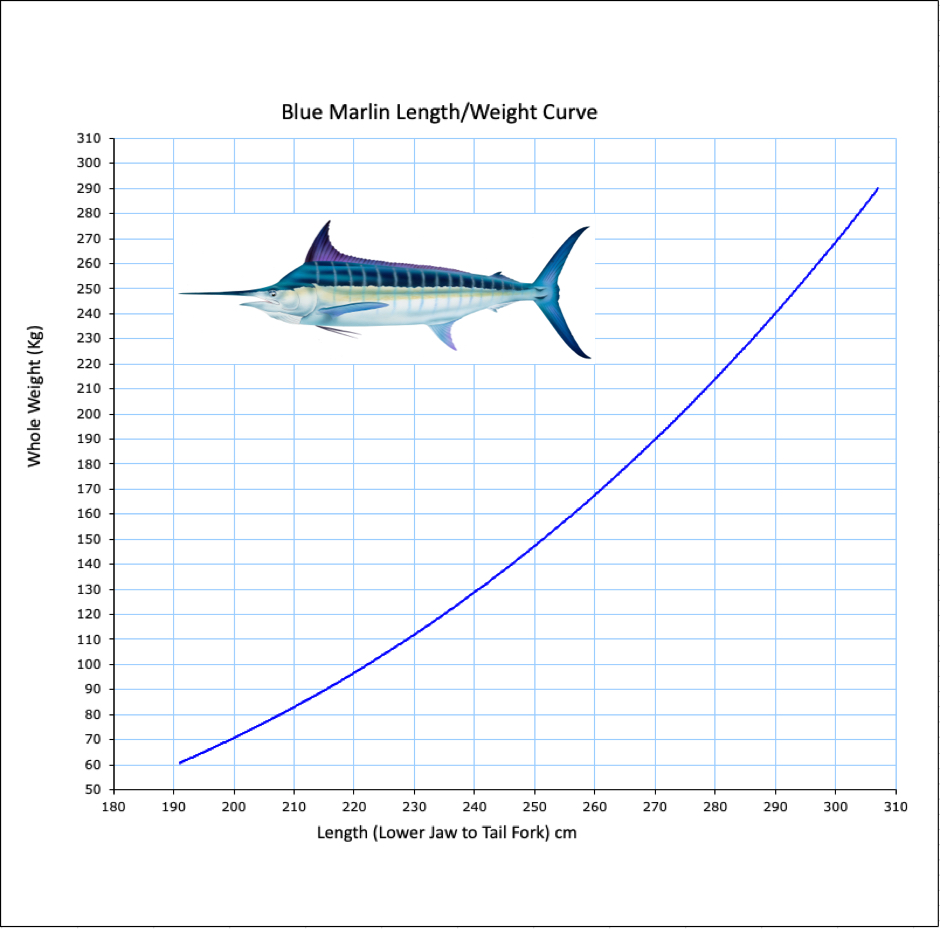

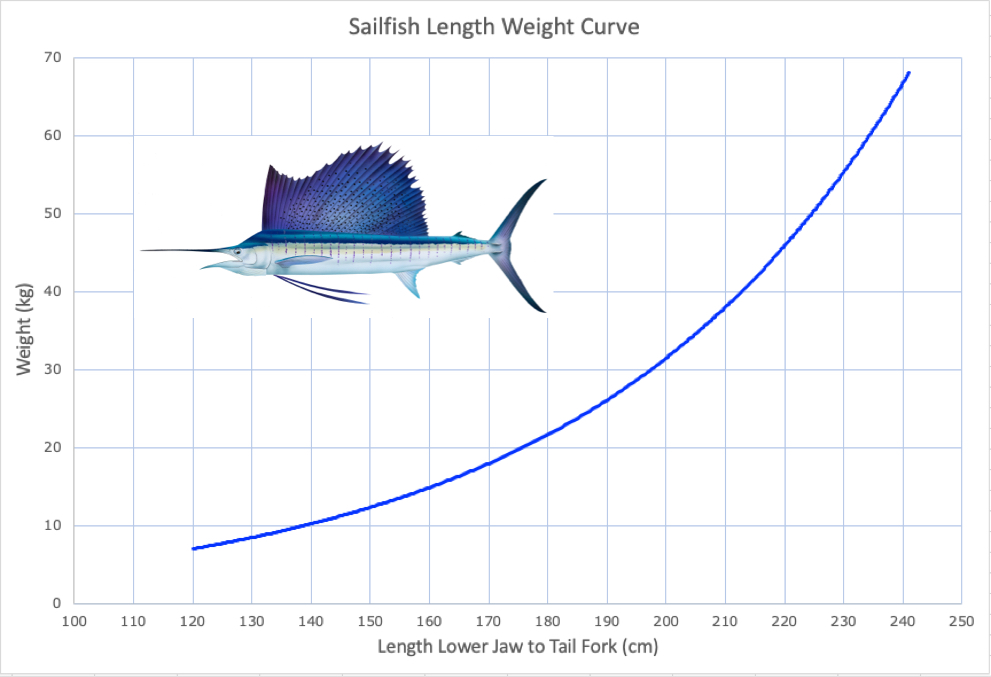
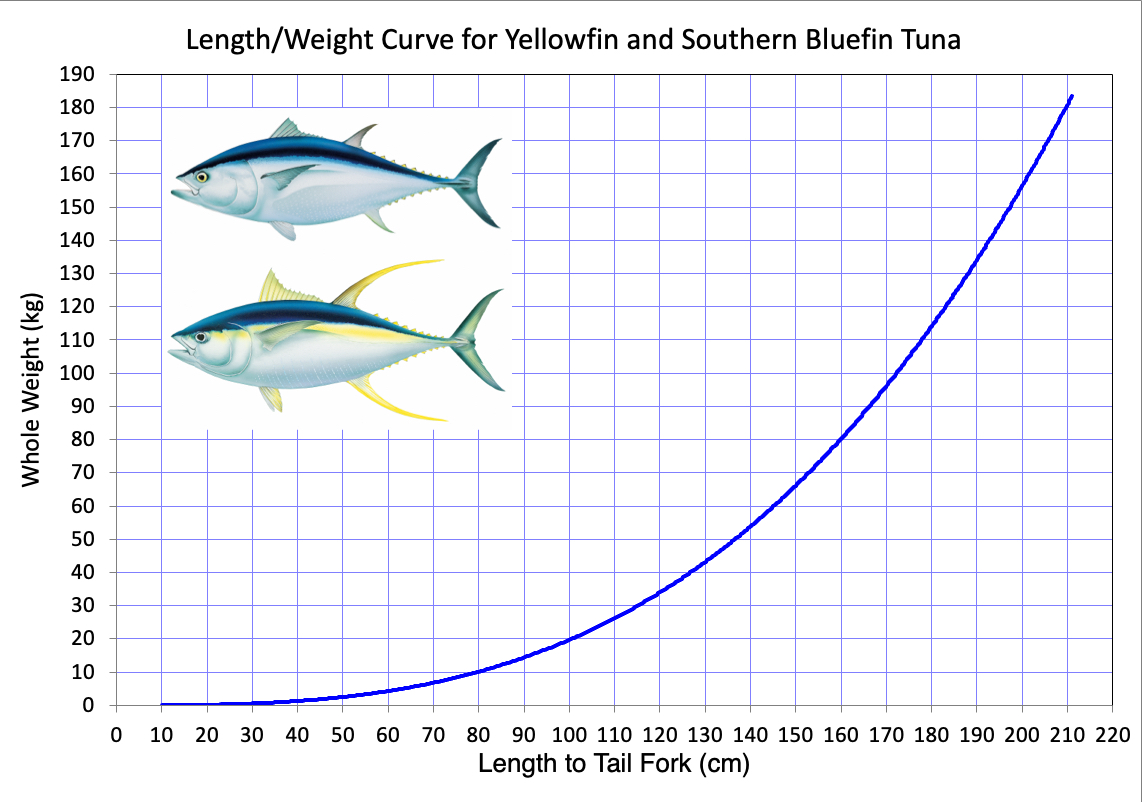
How big is that mako or tiger shark?




